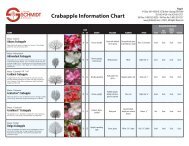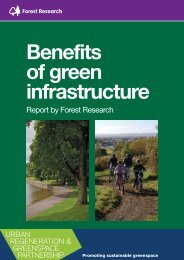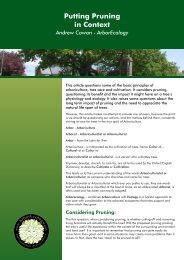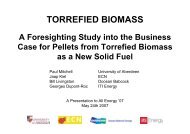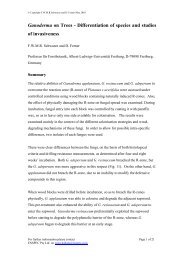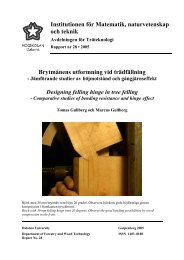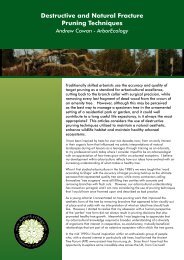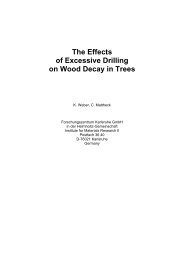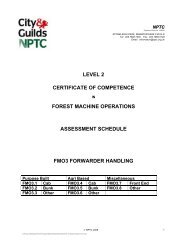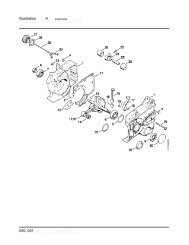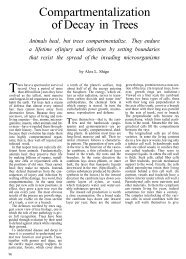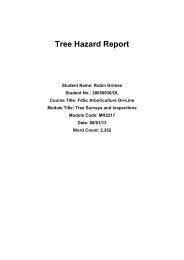working today for nature tomorrow - Justus-Liebig-Universität GieÃen
working today for nature tomorrow - Justus-Liebig-Universität GieÃen
working today for nature tomorrow - Justus-Liebig-Universität GieÃen
- No tags were found...
You also want an ePaper? Increase the reach of your titles
YUMPU automatically turns print PDFs into web optimized ePapers that Google loves.
The food requirement of bats in temperate zones is subject to significant seasonal fluctuationscorrelated with the reproductive cycle. There is an increased demand by the females duringthe reproductive phase at advanced pregnancy, reaching a climax during lactation phase.This is reflected in the higher food consumption by lactating females. Prey intake increasesby about 40-50 % from pregnancy to lactation (e.g. Anthony & Kunz 1977, Kunz 1974).Pregnancy and lactation of bats in temperate zones are synchronized with the period of thehighest food availability (e.g. Racey & Swift 1985). If the food density is too low during theperiod of maternity, few young are raised successfully.Food shortage can naturally be caused by unfavourable weather conditions, <strong>for</strong> example rainand low temperatures. However, more threatening is the loss of insect rich habitats.Woodland stands that have a high arthropod abundance either during the whole growingseason or during certain periods when bat prey is rare in most other places are key areas <strong>for</strong><strong>for</strong>aging bats. Single ancient trees may have the same function and can be considered keyelements in bat habitats.6. Methods <strong>for</strong> woodland managers to identify elementsof woodland important to batsThe identification of key areas and key elements <strong>for</strong> bats in woodland should follow twosteps described as follows.6.1 1st step: Recognising potential habitatsTo recognise habitats of bats in woods, you must consider their way of their life and try toassess the woods from the viewpoint of the bats. Ask the questions:Where are the oldest deciduous woods? From about 80-100 years of age onwardsdeciduous woods have progressively more treehole development and woodpeckers start tomake brooding holes. Also bark injuries and branch demolitions have occurred. A high holedensity is likely if the trees have reached an age of about 140 years, provided that the woodshave not been managed too intensively. This is often the case at sites with limitedproductivity.Where can you expect a sufficient insect density? Start with older and well structuredareas. A high insect density can be found in woods with several levels of different structures,as well at water, at <strong>for</strong>est edges, and in glades and clearings.What potential flight-paths exist <strong>for</strong> bats? Bats very frequently fly along landscapestructures like brooks, tree avenues, hedges, <strong>for</strong>est edges and woodland paths, and also flatelements like fruit orchard meadows and field copses.Besides their own knowledge of the area there are databases of records from <strong>for</strong>est wardensand <strong>nature</strong> observers in many <strong>for</strong>estry offices, which help to answer these questions. Thisincludes the records of the <strong>for</strong>est industries themselves, with details on tree species’distributions and age of stands. Furthermore there are aerial pictures, topographical maps(1:10,000 or 1:25,000) or maps of biotopes.46



